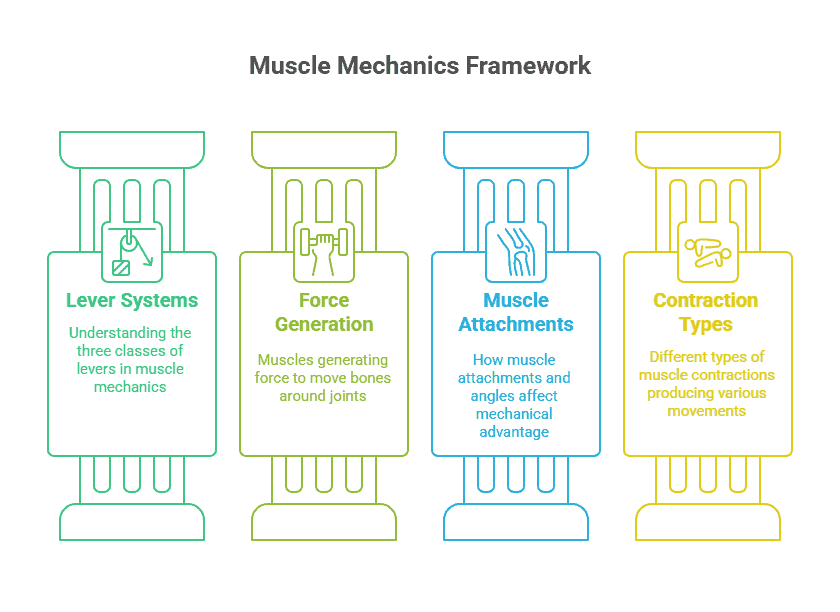Have you ever wondered how your muscles work to produce movement in your body? Understanding the mechanics of muscles is essential for anyone interested in anatomy and physiology. In this introductory lesson, we will delve into the fascinating world of muscle mechanics, focusing on lever systems and the movement of muscles.
Lever Systems
One of the key concepts in muscle mechanics is the use of lever systems. A lever is a rigid structure that rotates around a fixed point called a fulcrum. In the human body, bones act as levers, and joints serve as fulcrums. There are three types of levers in the body: first-class, second-class, and third-class. Each type of lever system has its own advantages and disadvantages when it comes to producing movement.
Movement of Muscles
When muscles contract, they exert force on bones, causing them to move. This movement is achieved through a complex interplay of muscles, tendons, and ligaments. Muscles can produce various types of movements, including flexion, extension, abduction, adduction, and rotation. Understanding how muscles work together to produce these movements is crucial for athletes, physical therapists, and anyone interested in human movement.
Key Points
- Muscle mechanics is the study of how muscles work to produce movement in the body.
- Lever systems are essential for understanding how muscles exert force on bones to create movement.
- There are three types of levers in the body: first-class, second-class, and third-class.
- Muscles can produce various types of movements, such as flexion, extension, abduction, adduction, and rotation.
Key Takeaways:
- Understanding lever systems is crucial in studying muscle mechanics
- There are three classes of levers: first class, second class, and third class
- Muscles can generate force to move bones around various joints
- Muscle attachments and the angle of insertion affect the mechanical advantage of a muscle
- Different types of muscle contractions can produce different movements, such as concentric, eccentric, and isometric contractions
Key Terms:
- Muscle Mechanics: The study of how muscles produce force and movement.
- Lever Systems: A rigid structure (bone) that moves around a fixed point (joint) with the help of a force (muscle contraction).
- Movement: The act of changing physical location or position.
- Anatomy: The study of the structure of the body and its parts.
- Muscular System: The system of muscles in the human body that allows for movement and stability.
